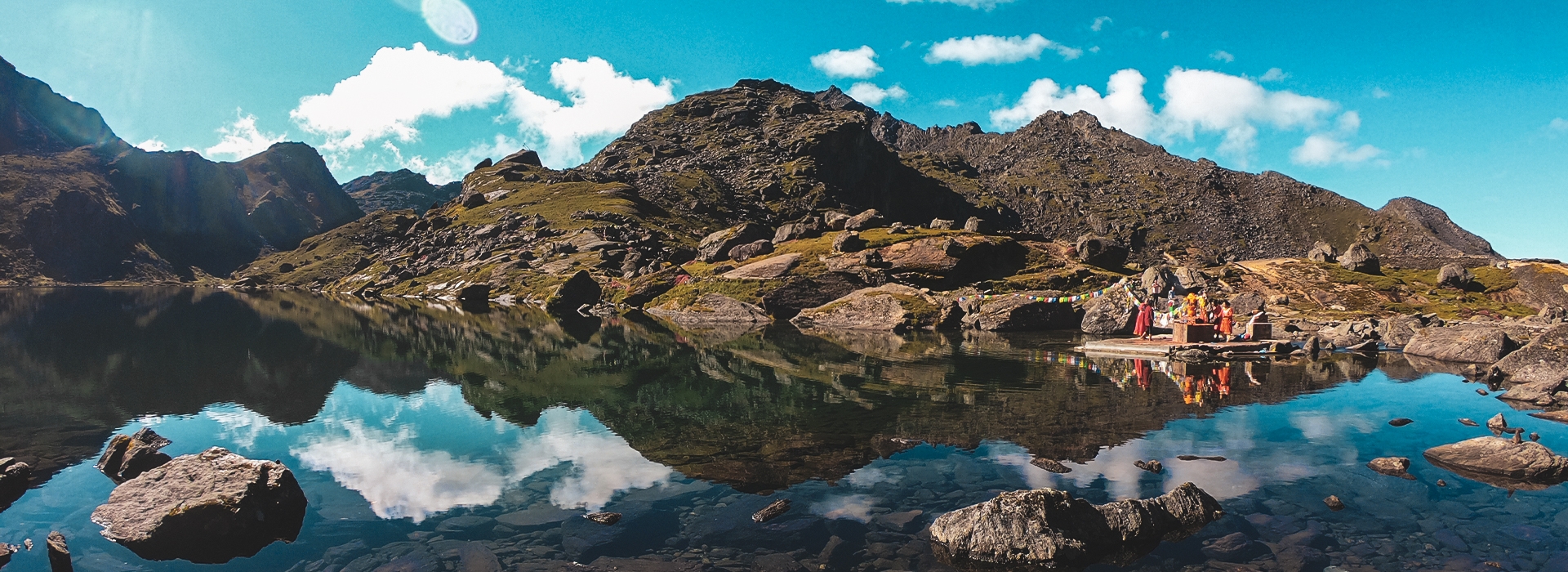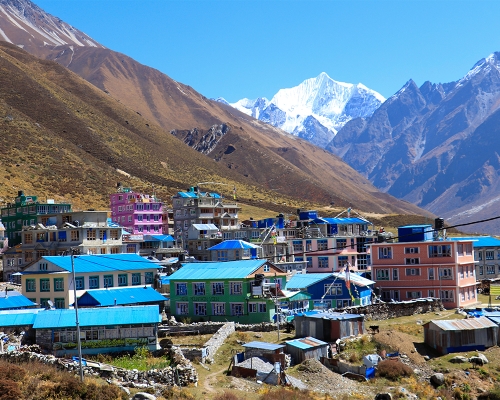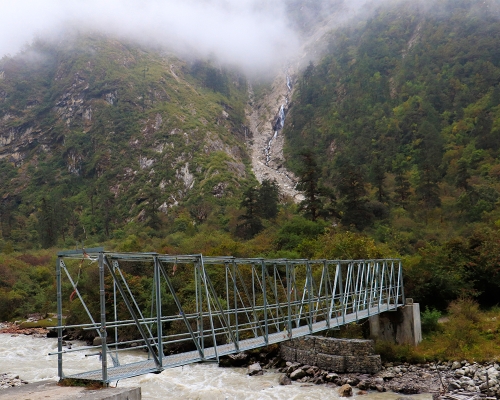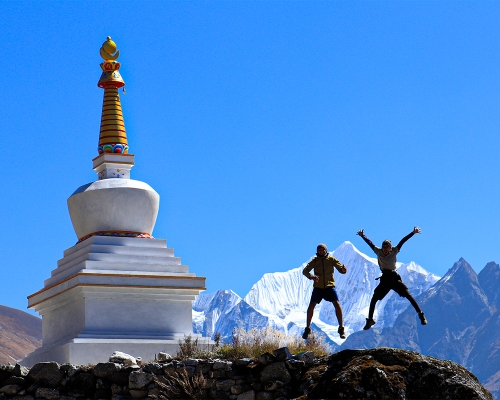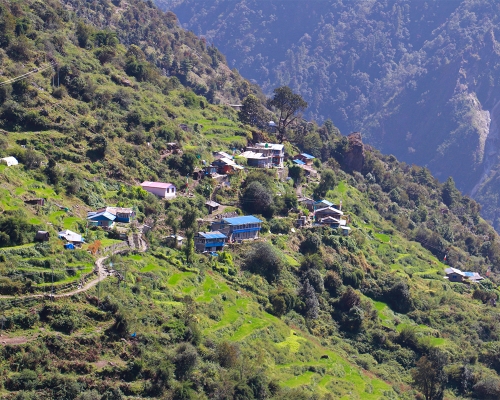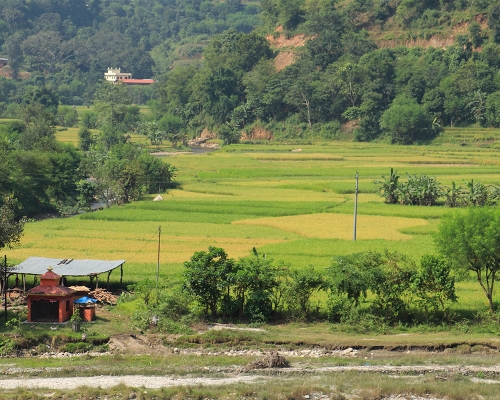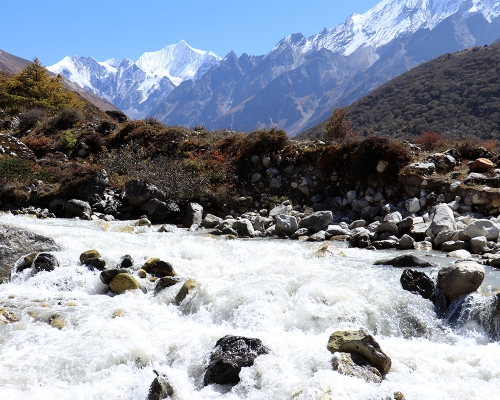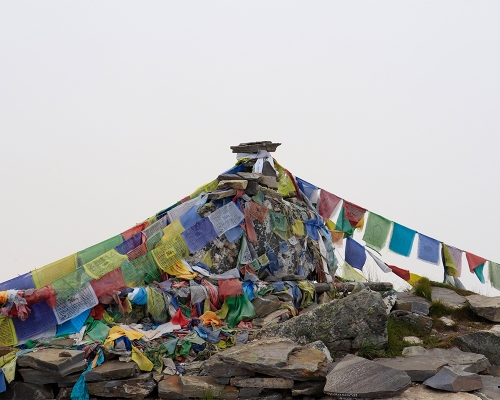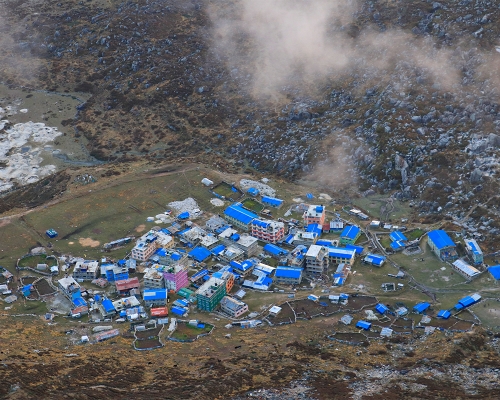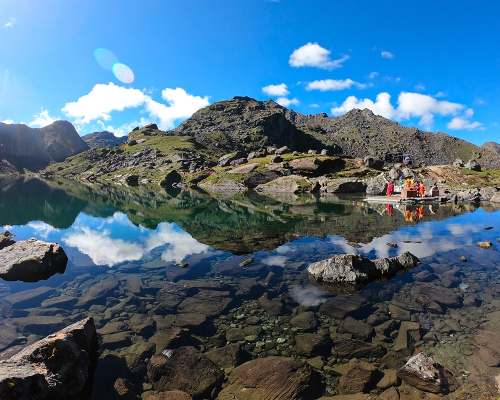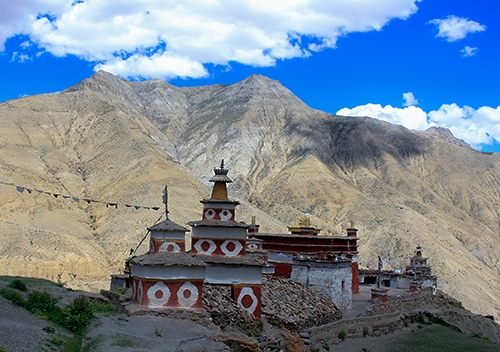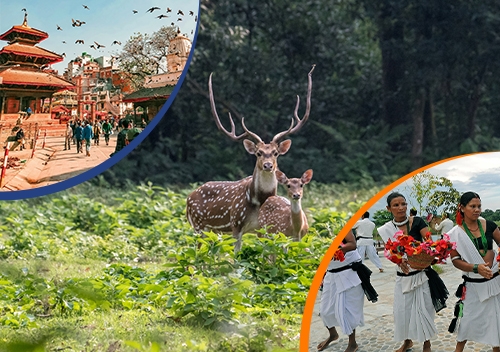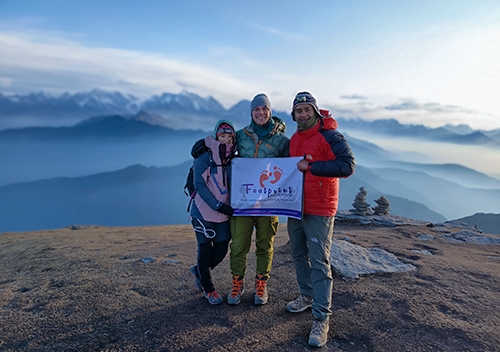Nestled within the heart of the Himalayas, the Langtang Valley and Gosaikunda Lake Trek offer a mesmerizing journey through some of Nepal's most pristine and awe-inspiring landscapes. This trek is a perfect blend of natural beauty, cultural richness, and spiritual significance, making it a popular choice among trekkers seeking a unique and immersive experience.
The Langtang Valley, situated to the north of Kathmandu, is flanked by the soaring peaks of the Langtang Lirung (7,227 m) and other majestic summits. The Gosaikunda Lake, a sacred alpine lake, adds a mystical touch to this trek. The trail winds through lush forests, charming villages, and high-altitude meadows, offering trekkers a diverse and captivating journey. The warm hospitality of the locals adds a personal touch to the trek, creating lasting memories for those who venture into this remote region.
The trek unfolds a tapestry of breathtaking landscapes, from dense rhododendron forests to cascading waterfalls and serene meadows adorned with vibrant wildflowers. The Langtang Valley offers panoramic views of snow-capped peaks, while the Gosaikunda Lake, surrounded by rocky terrain and glaciers, adds an ethereal beauty to the journey. Trekkers can experience the changing scenery with each passing day, providing a constant sense of wonder and discovery.
Gosaikunda Lake holds immense religious importance for both Hindus and Buddhists. According to Hindu mythology, the lake is believed to be the abode of Lord Shiva, and during the full moon of August, pilgrims embark on a sacred journey to take a dip in its icy waters. The trek to Gosaikunda Lake allows trekkers to witness and participate in these spiritual rituals, providing a unique cultural and religious experience.
The Langtang Valley and Gosaikunda Lake Trek represent more than just a physical journey through the Himalayas, they offer a spiritual and cultural odyssey. This tailored itinerary provides a holistic experience, blending challenging treks with cultural immersion and encounters with nature's splendor. Each day unfolds as a chapter in an epic tale, revealing the unparalleled beauty and cultural richness of this region. For those seeking an adventure that transcends the ordinary, the Langtang Valley with Gosaikunda Lake Trek promises an unforgettable odyssey in the lap of the world's highest peaks.
Langtang Gosaikunda Trek Best Time
The Langtang Valley and Gosaikunda Lake trek in Nepal are best undertaken during the spring (March to May) and autumn (September to November) seasons. Spring offers stable weather with mild temperatures and clear skies. The blooming rhododendron flowers add vibrant colors to the landscapes, making it a visually appealing time for trekking.
Autumn is another best season, characterized by stable weather and clear skies. The cool temperatures, especially at higher altitudes, create comfortable trekking conditions. Both seasons provide excellent visibility of the surrounding mountains, allowing trekkers to enjoy panoramic views of the Himalayas.
However, it is advisable to avoid the monsoon season (June to August) due to heavy rainfall, which can result in slippery and muddy trails, leeches, and limited visibility. Similarly, winter (December to February) is not recommended as temperatures drop significantly, and higher-altitude trails may be covered in snow. Before embarking on the trek, it's crucial to check current weather forecasts and trail conditions for a safe and enjoyable experience.
Major Attractions of Langtang Gosaikunda Trek
Tserko Ri
Tserko Ri, a prominent peak with an elevation of 4,984 meters, stands as a challenging yet incredible vantage point during the Langtang Gosaikunda Trek. As you embark on the trek, prepare yourself for a strenuous climb to reach its summit. However, the effort pays off immensely as you are greeted with breathtaking 360-degree views of the surrounding landscapes. From the vast expanse of the Langtang Valley to the majestic peaks such as Langtang Lirung and Dorje Lakpa, the panorama from Tserko Ri is nothing short of awe-inspiring, particularly when witnessed during the magical moments of sunrise and sunset.
Gosaikunda Lake
The sacred Gosaikunda Lake is another major attraction of Langtang Gosaikunda Trek, nestled at an altitude of 4,380 meters within the Langtang National Park. This alpine lake holds great religious significance for both Hindus and Buddhists in Nepal.
According to Hindu mythology, Gosaikunda was formed by Lord Shiva's trident and is considered his celestial abode. The lake is a pilgrimage site, drawing devotees during the Janai Purnima festival. Beyond its spiritual importance, Gosaikunda captivates with its natural beauty. Surrounded by towering peaks, the turquoise-blue lake creates a mesmerizing scene against the backdrop of snow-capped mountains. The trek to Gosaikunda takes adventurers through diverse landscapes, including dense forests, picturesque villages, and high alpine meadows.
Highlights of Langtang Valley and Gosaikunda Trek
- Explore UNESCO World Heritage Sites such as Pashupatinath Temple, Swyambhunath Stupa, Boudhanath Stupa, and Patan Durbar Square.
- Traverse deep gorges and cross scenic suspension bridges,
- Indulge in the culinary delights of the local cheese at Kyanjin Gompa,
- Hike up to Tserko Ri (4,984 m), the highest point of the trek during the exploration day,
- Immerse yourself in the spiritual ambiance of the Gosaikunda Lake,
- Witness the unique beauty of nearby lakes such as Bhairab, Saraswati, and Surya Kunda,
- Explore the diverse flora and fauna in Langtang National Park,
- Encounter the unique ecosystem of Shivapuri National Park as you trek through Sundarijal
Langtang Gosaikunda Trekking Difficulty and Fitness Requirement
The Langtang Gosaikunda Trek is considered a moderate to strenuous trek. This 16-day Langtang Gosaikunda Itinerary takes you to the highest point, Tserko Ri at an elevation of 4,983 meters above sea level.
Whether a beginner or an experienced hiker, altitude sickness can be a concern during this trek. It is highly recommended to acclimatize at higher altitudes to get used to the increasing elevation.
The trek demands a reasonable level of fitness, and prior trekking experience is beneficial. Weather conditions, especially during winter and monsoon seasons, can add to the challenge. Overall, adequate preparation, including physical fitness and awareness of altitude-related risks, is crucial for a successful Langtang Gosaikunda Trek.

